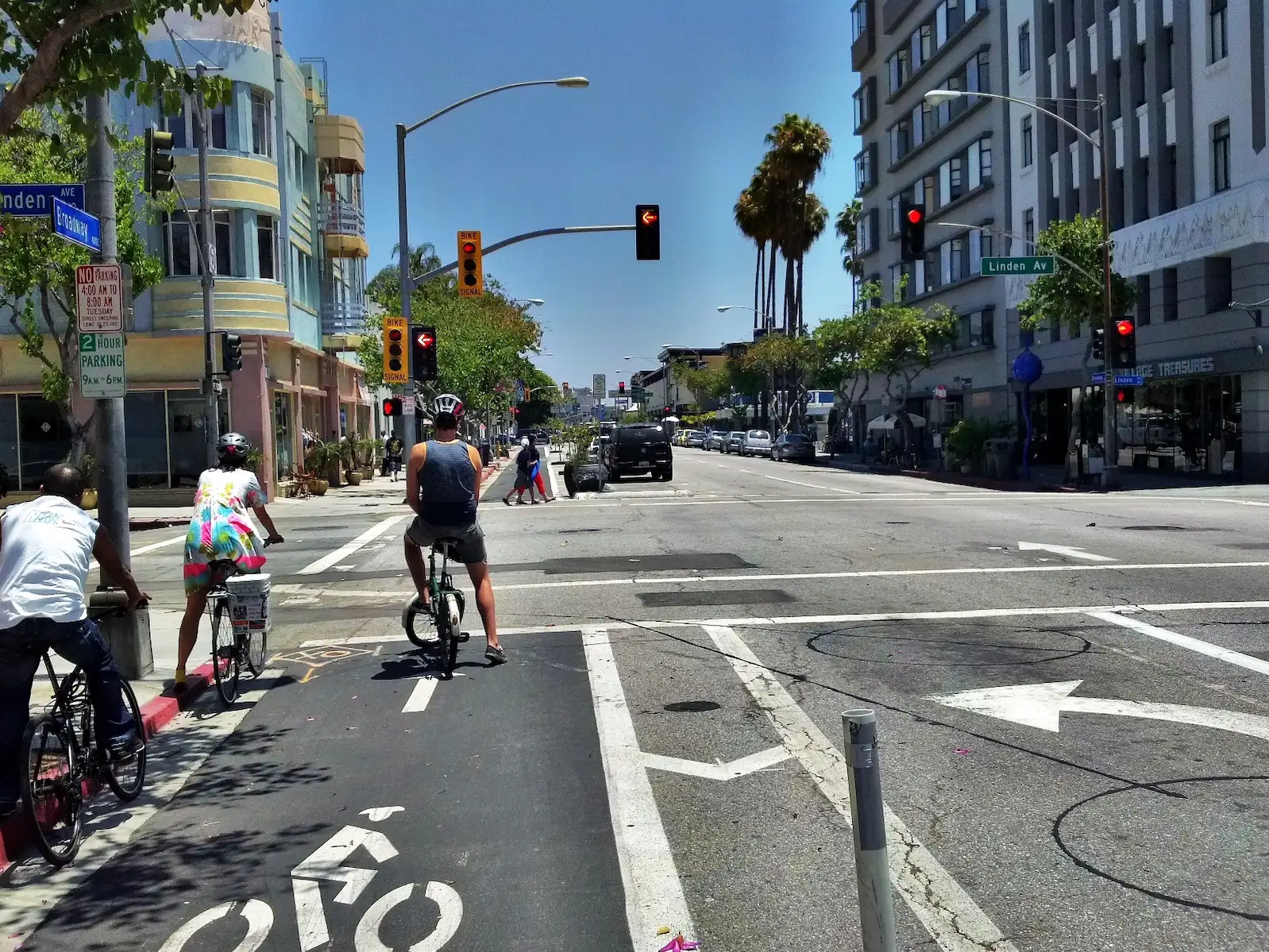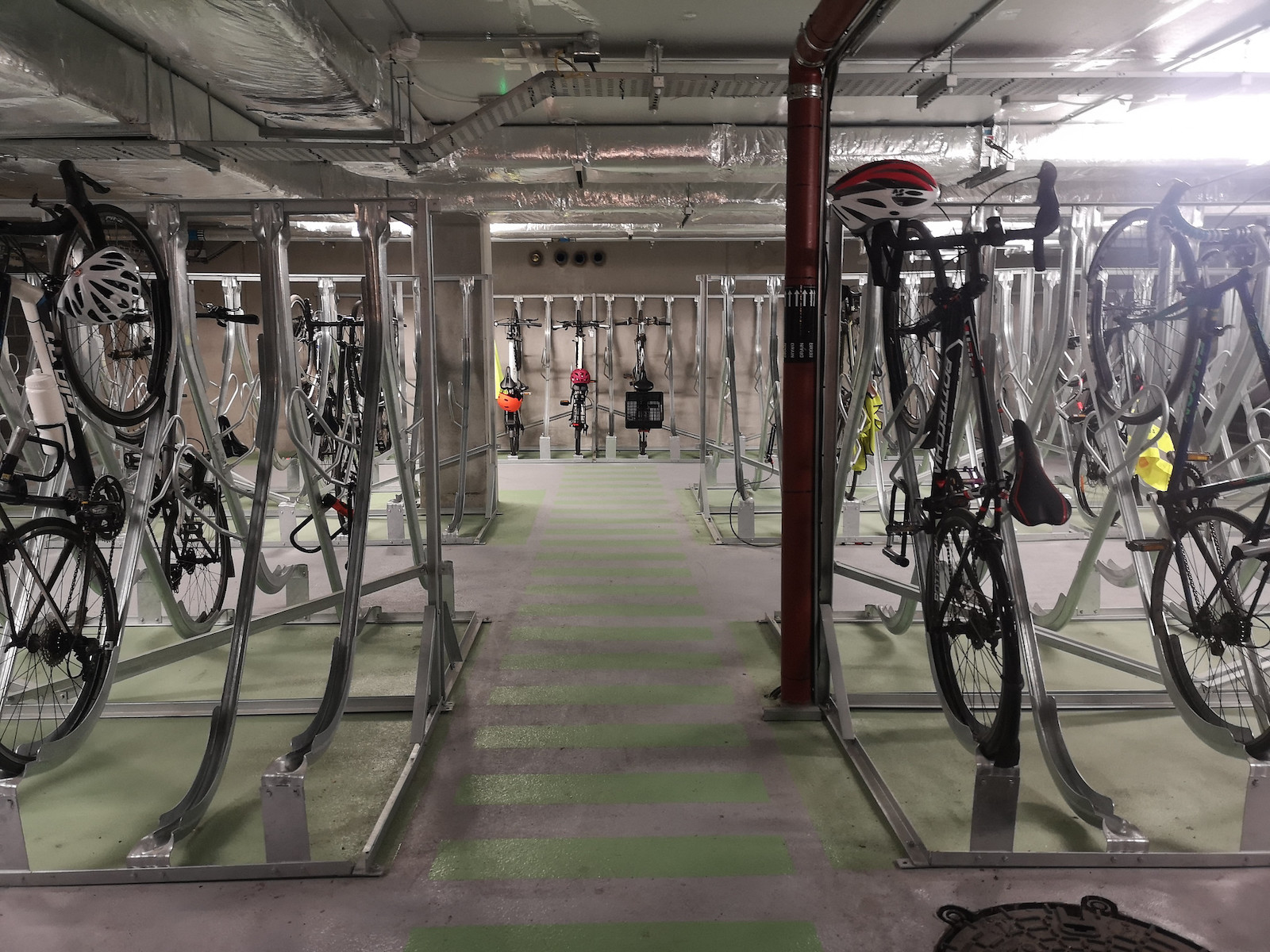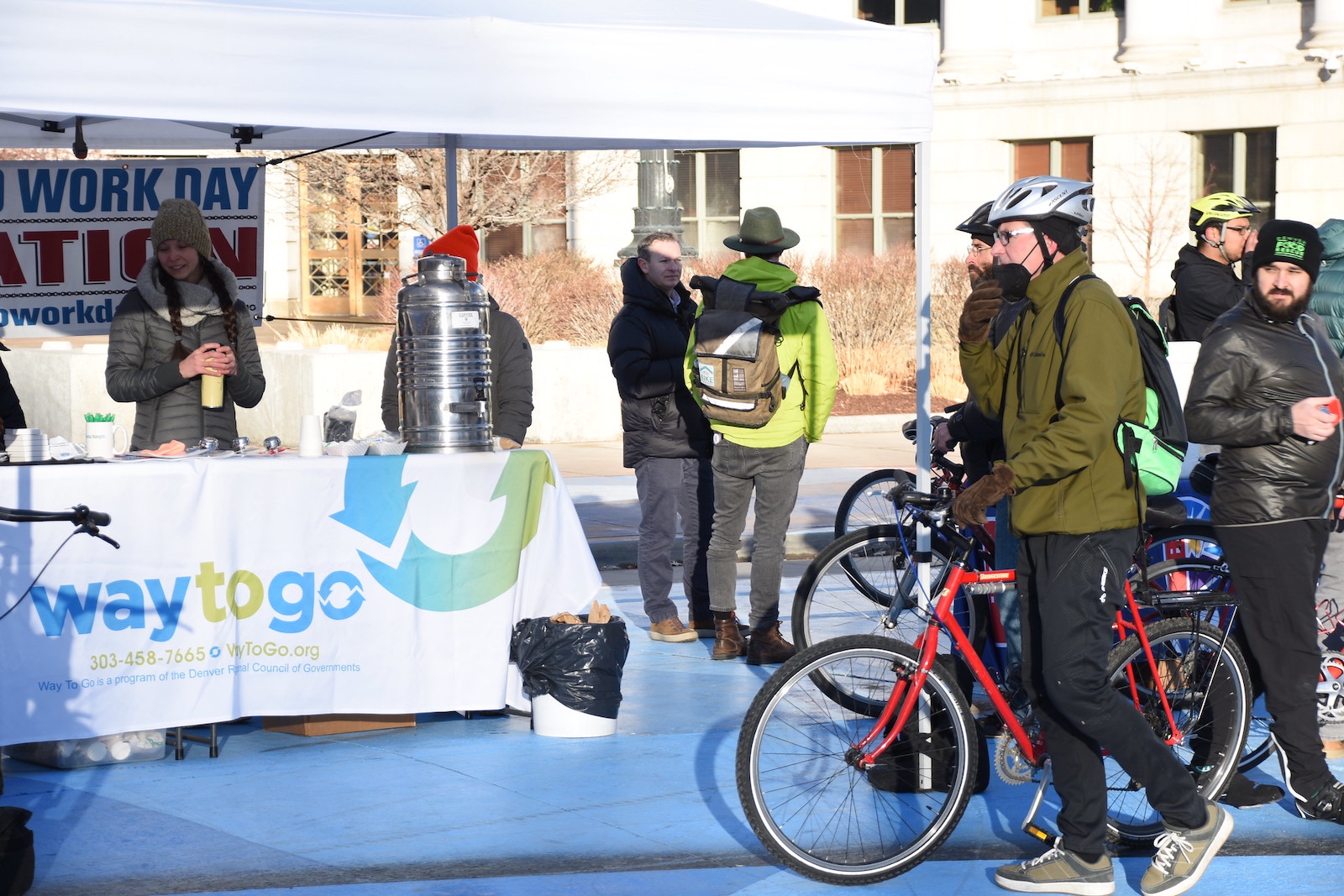Building a bike-friendly city takes thoughtful planning and action. By focusing on these strategies, city planners can make cycling safer, more enjoyable, and accessible for everyone. According to a 2019 study, having more cyclists and protected bike facilities actually makes cities safer for all road users, including drivers. Here are five simple ways to improve the cycling experience and encourage more people to choose it as their mode of transportation.
1. Prioritize dedicated bike lanes and connected networks
One of the most effective ways to encourage cycling is to create dedicated bike lanes that are physically separated from car traffic, especially when speed limits are greater than 35 mph. This provides a safer and more comfortable riding experience for cyclists, reducing accidents and making biking more appealing. Barriers, curbs, or parked cars should separate bike lanes from car traffic, providing a clear and protected space for cyclists. Connecting key areas, such as residential neighborhoods, business districts, parks, libraries, and schools, with a network of bike lanes makes it easier for cyclists to navigate the city and encourages longer rides.
Portland, Oregon, is renowned for its extensive network of dedicated bike lanes, often separated from traffic by barriers or curbs, providing safer and more comfortable routes for cyclists. The city also has "bike boulevards" or "neighborhood greenways" on low-traffic streets designed specifically for biking.
Washington, D.C., has invested heavily in creating dedicated bike lanes throughout the city. The city has installed protected bike lanes on major roads and continues to expand its network, making it easier and safer for cyclists to commute and navigate the city.

Photo by San Francisco Bicycle Coalition
2. Design safe intersections
Intersections can be dangerous for cyclists, so it's essential to design them with safety in mind. Installing traffic signals specifically for cyclists, allowing them to start before cars and have dedicated green phases, improves safety at intersections and reduces the risk of conflicts with car traffic.
Intersections can also be designed to minimize collisions between cyclists and vehicles. This can involve using raised crosswalks, bright lane markings, and protective islands.
Davis, California, is a leading example of a bike-friendly city in the U.S., featuring several protected intersections with bike-specific signals and designs to enhance safety for cyclists. The city has long been a leader in developing innovative cycling infrastructure, including the first protected intersection for cyclists in the country.
Austin, Texas, has developed safer intersections for cyclists, including protected bike lanes that extend through intersections and bike-specific signals in areas with high bicycle traffic. The city is focused on improving visibility and reducing conflict points between cyclists and vehicles.
3. Expand bike parking, storage, and facilities
Ample bike parking and storage options encourage cycling by making it more convenient for people to park their bikes.
Secure bike racks should be installed in high-traffic areas, such as shopping districts, public transport hubs, and schools, making it easier for cyclists to park their bikes and run errands or commute. Covered or sheltered bike parking options can protect bikes from weather, which can make cycling a more attractive option year-round. For e-bikes and other mico-mobility options, such as se-bikes, reliable charging infrastructure can boost ridership. Bike sharing programs and docks can also make cycling more accessible and flexible.
Seattle, Washington, offers a range of bike parking and storage solutions, including bike racks throughout the city, covered bike parking, and bike storage facilities at major transit hubs. The city encourages businesses and developers to install bike parking through incentives and guidelines.
Chicago, Illinois, provides various bike parking options across the city, with numerous bike racks and bike corrals. Over 17,000 bike racks and on-street bike corrals have been installed. The city also runs a bike parking program that offers guidance to businesses and developers on accommodating cyclists.

Photo by Acme
4. Promote traffic-calming measures
Traffic-calming measures can help to slow down vehicle traffic and make streets safer for cyclists.
Lower speed limits in areas with high bicycle traffic should be implemented to reduce potential accidents. Road narrowing, speed bumps, and other traffic-calming designs can slow down vehicle traffic in mixed-use areas.
Madison, Wisconsin, has implemented several traffic-calming measures, such as lower speed limits in residential areas and the use of road narrowing, speed bumps, and traffic circles to slow down traffic. The city also continues to prioritize cycling by creating bike-friendly corridors and slow streets.
Cambridge, Massachusetts, has introduced multiple traffic-calming measures to improve safety for cyclists and pedestrians, including protected bike lanes, reduced speed limits, and raised crosswalks in areas with significant pedestrian and bicycle activity.
5. Invest in cycling education and awareness
Educating both drivers and cyclists on sharing the road safely is crucial for creating a bike-friendly environment.
Campaigns that educate both drivers and cyclists on traffic laws, safe biking practices, and the importance of mutual respect are one strategy. Events such as bike-to-work days, open streets events, or bike festivals promote cycling as a fun, safe, and viable mode of transport. These events can also help to build a sense of community among cyclists.
Minneapolis, Minnesota, has invested in comprehensive cycling education programs and public awareness campaigns, promoting bike safety through community events, bike-to-work days, and educational programs for cyclists and motorists. The city also partners with local organizations to offer free or low-cost bike safety classes.
Denver, Colorado, actively promotes cycling through community engagement and awareness campaigns. The city hosts events like the annual "Bike to Work Day" and has launched various initiatives to improve safety and encourage more people to choose cycling as a mode of transportation.

2022 Winter Bike to Work Day in Denver, Colorado. Photo by DRCOGorg
By prioritizing these five strategies, cities can create a more welcoming and accessible environment for cyclists. Prioritizing dedicated bike lanes, designing safe intersections, expanding bike parking and storage, promoting traffic-calming measures, and investing in cycling education and awareness are essential steps towards building a bike-friendly city. These efforts not only benefit cyclists but also contribute to a safer and more sustainable urban environment for everyone.
